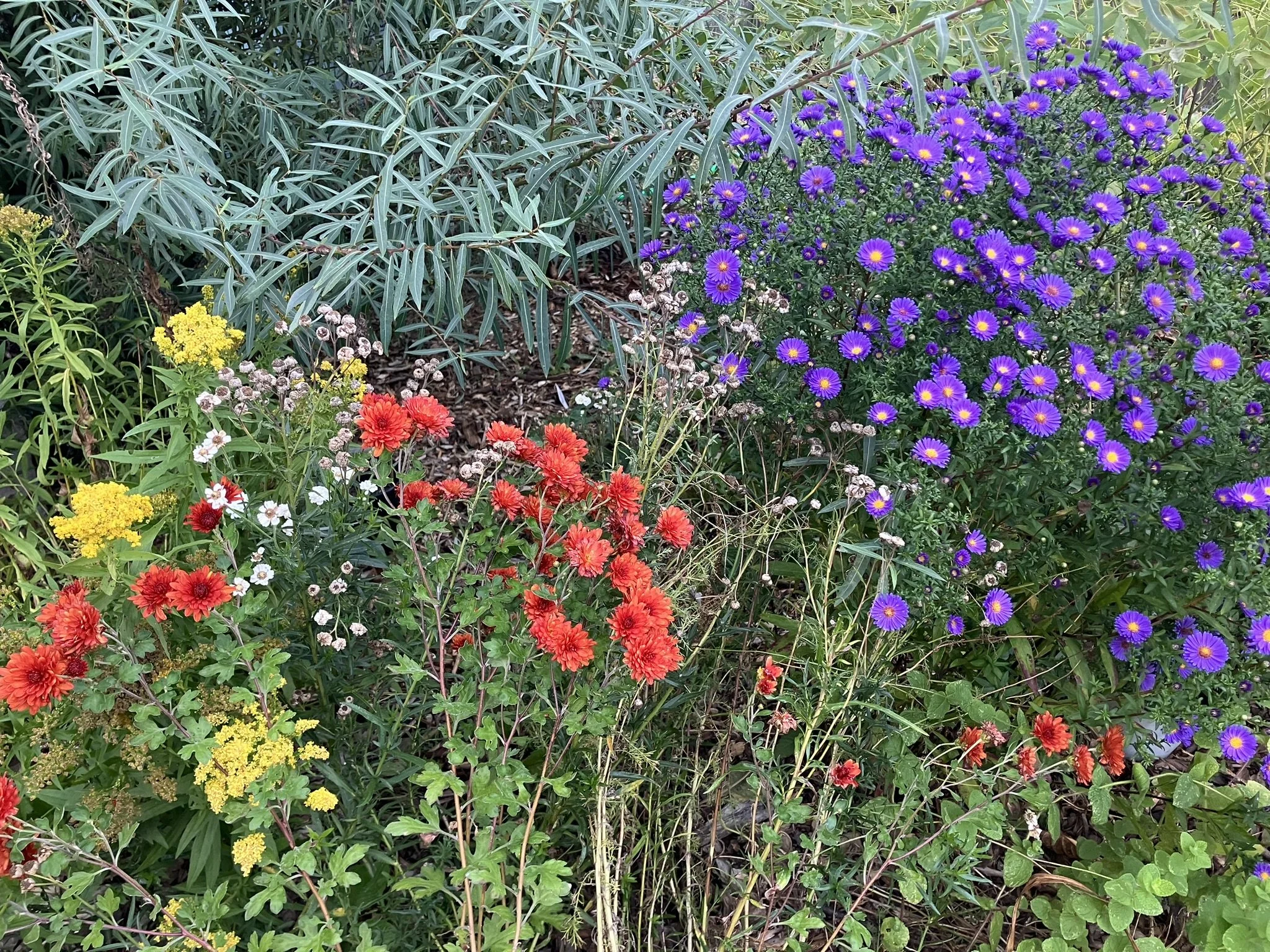Fall Gardening Tasks
The long hot summer is finally over. Exhausted gardeners across the northern hemisphere are breathing a sigh of relief as we gather up the last of the summer crops and lean into preserving the harvest.
While the summer garden is officially ending, you may have planted a fall or winter garden mid-summer. Or perhaps you are extending the summer season with your cold frames or greenhouse. Just because the summer garden is ending, it doesn’t mean that the gardening season is over! For some, it is just the beginning.
Gardening to do in the fall season:
Collect seeds from summer plants
With my self-seeders, like calendula, borage, nigella, and scabiosa, I take the seedheads and sprinkle the seeds into the garden spaces where I want them to grow. Most of the time, I just let things be and the plants spread themselves. Come spring, these little seeds will sprout and and provide another year of plentiful, free plants! You can also collect the seeds by tapping or gently brushing the seedheads to release the seeds or by hanging the plants upside down by their stems and covering the seedheads with a paper bag. If you are keeping the seeds to sow later, I like to put them in a paper envelope. If you save the seeds, you can start them inside this winter or early spring and put the plants exactly where you want them.
Tidy up old growth of perennials
Because a lot of my urban garden is visible to neighbors and passers-by, I like to tidy up my herbaceous perennials after they are spent for the season. Sometimes, you can already see the new growth emerging from the bottom of the plants. If you are a lazy gardener or want to do your part to support your yard’s ecosystem, you can just leave things as well since this task is for purely aesthetic reasons. The benefit of cutting plants back for me is that it exposes more ground to add in even more plants! However, as we approach frosty temperatures, I tend to allow my late-summer and autumn perennials stand to allow insects to overwinter and for birds to feed on throughout the winter.
Lift and divide perennials
Early fall is the perfect time to lift and divide your herbaceous perennials. These are the plants that die back all the way to the ground and produce new foliage every year. The ground is typically still warm and the plants are usually done producing aerial parts for the season. This gives plants a chance to establish roots in a new location before it gets cold. This is one of my favorite ways of thickening up my borders and getting more plants for free.
Plant spring bulbs
The really exciting part about fall is that you get to bury treasures that will bloom in the spring time. Daffodils, crocus, tulips and more can be planted in the fall. For tulips, I’ve found that the best time to plant is as late into fall as possible before the ground gets too cold and hard. I have even planted bulbs in the early spring, and while they were much smaller than if I had planted them in fall, they still came up and flowered. Planting tulips later in the fall prevents them from getting water logged and rotting in the ground. Another really fun “bulb” to plant is garlic! If you buy organic garlic from the grocery store, you can plant individual cloves (tips up!) that will hopefully turn into full bulbs of garlic by July.
Plant microgreens, leafy greens, and lettuces
Aside from garlic, you can still plant lots of vegetables, especially if your first frost date usually comes later in the fall. Things like kale, chard, and collards will provide you with fresh veggies even as it gets into freezing temperatures. Microgreens and cut and come again lettuces may be able to survive indoors on a sunny windowsill or under grow lights. If you act fast you can even get in a harvest of radishes, a fast growing crop. Keep in mind, though, that the maturation rates will be slower than those listed on the seed packets since the days are getting shorter and the weather is getting cooler.
Extend the outdoor growing season
Speaking of planting more for the fall and winter, you can extend your growing time by a few weeks by utilizing protective measures, such as row covers to protect plants from light frosts. You can continue to grow many plants in cold frames or unheated greenhouses as well. If you have a heated greenhouse (lucky you!), you can keep plants producing all winter.
Happy gardening!
<3 Roxy in the Garden
